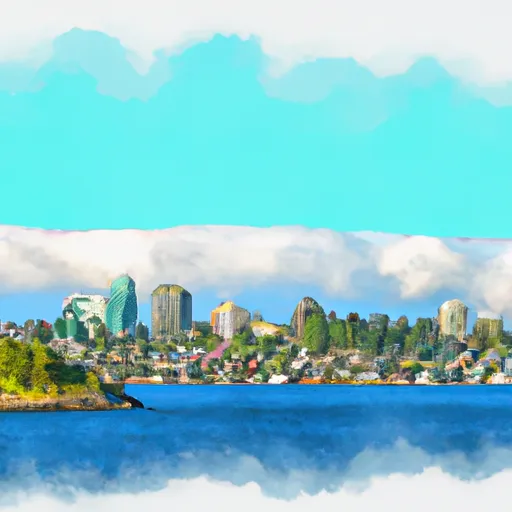-
 Snoflo Premium
Snoflo Premium
Get unlimited access to all our content
With no Ad interruptions! - Start Your Free Trial Login with existing account
Shaw-Island
Eden Index
Climate
8.0
•
Recreation
4.6
•
Community
2.1
•
Safeguard
5.3/10

Shaw Island is a picturesque island located in the San Juan archipelago in Washington State, USA. Known for its tranquil and serene atmosphere, Shaw Island offers visitors a unique experience with its diverse climate, beautiful hydrology constituents, and various outdoor recreation opportunities.
The island experiences a temperate marine climate, characterized by mild summers and cool, wet winters. Summers are typically dry with temperatures ranging from 60°F to 80°F, making it ideal for outdoor activities. Shaw Island's hydrology constituents are abundant and stunning, with pristine lakes, ponds, and marshes dotting the landscape. The island is also surrounded by the gentle waters of the Salish Sea, providing ample opportunities for boating, kayaking, and fishing.
Outdoor enthusiasts will find plenty of activities to indulge in. Shaw Island offers numerous hiking trails, including the Shaw County Park Nature Trail, which meanders through lush forests and offers breathtaking views of the surrounding waterways. The island also has a public beach, perfect for picnicking, swimming, and beachcombing. Nature lovers can explore the Shaw Island Land Preserve, a protected area home to diverse plant and animal species.
In summary, Shaw Island's temperate climate, stunning hydrology constituents, and abundance of outdoor recreation opportunities make it an idyllic destination for those seeking tranquility and natural beauty.
What is the Eden Index?
The Snoflo Eden Index serves as a comprehensive rating system for regions, evaluating their desirability through a holistic assessment of climate health, outdoor recreation opportunities, and natural disaster risk, acknowledging the profound impact of these factors on livability and well-being.
Climate Health Indicator (CHI): 8.0
Shaw-Island receives approximately
702mm of rain per year,
with humidity levels near 82%
and air temperatures averaging around
10°C.
Shaw-Island has a plant hardyness factor of
8, meaning
plants and agriculture in this region tend to thrive here all year round.
By considering the ideal temperature range, reliable water supplies, clean air, and stable seasonal rain or snowpacks, the Climate Health Indicator (CHI) underscores the significance of a healthy climate as the foundation for quality living.
A healthy climate is paramount for ensuring a high quality of life and livability in a region, fostering both physical well-being and environmental harmony. This can be characterized by ideal temperatures, reliable access to water supplies, clean air, and consistent seasonal rain or snowpacks.
Weather Forecast
Streamflow Conditions
Puget Sound
Area Rivers
Puget Sound
Snowpack Depths
Puget Sound
Reservoir Storage Capacity
Puget Sound
Groundwater Levels
Recreational Opportunity Index (ROI): 4.6
The Recreational Opportunity Index (ROI) recognizes the value of outdoor recreational options, such as parks, hiking trails, camping sites, and fishing spots, while acknowledging that climate plays a pivotal role in ensuring the comfort and consistency of these experiences.
Access to outdoor recreational opportunities, encompassing activities such as parks, hiking, camping, and fishing, is crucial for overall well-being, and the climate plays a pivotal role in enabling and enhancing these experiences, ensuring that individuals can engage in nature-based activities comfortably and consistently.
Nearby Ski Areas
Catastrophe Safeguard Index (CSI):
The Catastrophe Safeguard Index (CSI) recognizes that natural disaster risk, encompassing floods, fires, hurricanes, and tornadoes, can drastically affect safety and the overall appeal of an area.
The level of natural disaster risk in a region significantly affects safety and the overall livability, with climate change amplifying these risks by potentially increasing the frequency and intensity of events like floods, fires, hurricanes, and tornadoes, thereby posing substantial challenges to community resilience and well-being.
Community Resilience Indicator (CRI): 2.1
The Community Resilience Indicator (CRI) recognizes that education, healthcare, and socioeconomics are crucial to the well-being of a region. The CRI acknowledges the profound impact of these elements on residents' overall quality of life. By evaluating educational resources, healthcare accessibility, and economic inclusivity, the index captures the essential aspects that contribute to a thriving community, fostering resident satisfaction, equity, and social cohesion.

